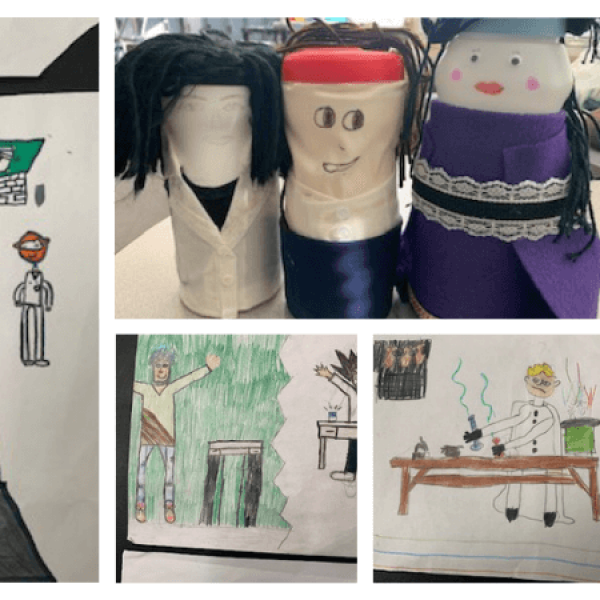Where's Your Purple Hair?: A Story about STEM Identity in the 5th Grade
At the beginning of each school year, I ask my students: "What is a scientist?" After jotting down their own individual ideas, students form groups to create a picture of a scientist and present it to the class. Then we collectively list the characteristics portrayed in their models. Crazy hair, chemical explosions, accidents, dead bodies... these are just a few of the characteristics that fifth-grade students often come up with. This leads us into a discussion about the origin of these popular misconceptions. As fifth-graders, they will become scientists this year, and there is no bright purple hair in a Catholic School dress code.
Once we agree on a more realistic view of what scientists do, I challenge my students to name as many famous scientists as possible. The last few years I have expanded the question to include famous STEM leaders. This year's group of 20 fifth graders came up with quite an impressive list: Albert Einstein, Elon Musk, Steve Jobs, Isaac Newton–to name a few. But I wasn't paying attention to the names that were on that list as much as I was focused on who was missing: FEMALES. Collectively my twenty students could think of three female scientists or STEM leaders. Three. When pressed, they couldn't tell me why these three women were famous.
How can we expect our young women to combat the gender gaps in math and science when they don't know any role models to emulate? So was born the Crafty Creamer Scientist Project. Each student researches one important female STEM leader and then decorates a coffee creamer (or similarly-sized bottle) to look like their scientist. Students then present to their classmates a short synopsis of this person's life, her contributions to STEM, and one major obstacle she faced. Fifth graders learn about women who weren't allowed to publish their findings, women who trail blazed their way through their fields, and women who didn't give up. Throughout this project, students start adding to their list of STEM leaders, which now includes names such as Edith Clarke, Beulah Louise Henry, and Marie Curie.
While we start the school year with famous scientists, it is just as important to recognize the everyday STEM leaders who are all around us – so this year I invited parents into the classroom for a STEM job fair. The goal of the afternoon was to expose students to different STEM careers that they might be interested in pursuing in their future. During our STEM job fair, I stood back and marveled at what wonderful examples these parents had to offer. Students learned about the importance of math to firefighters and realtors alike. They learned about the importance of branding from a graphic designer and the chemistry that goes into baking. Students heard about energy and transformers and had the opportunity to participate in a fingerprinting activity with local police officers. These were just a few of the wonderful STEM jobs our parents demonstrated.
As I strive to introduce my students to real people doing real STEM, my hope is that all my students, male and female, can envision themselves in the ever-growing STEM industry.
